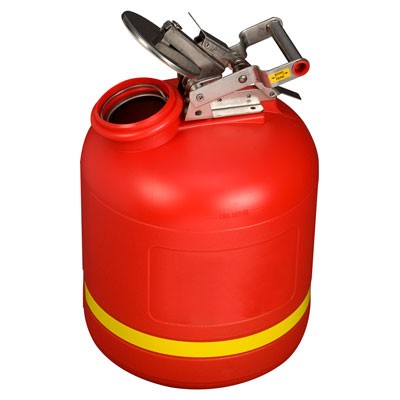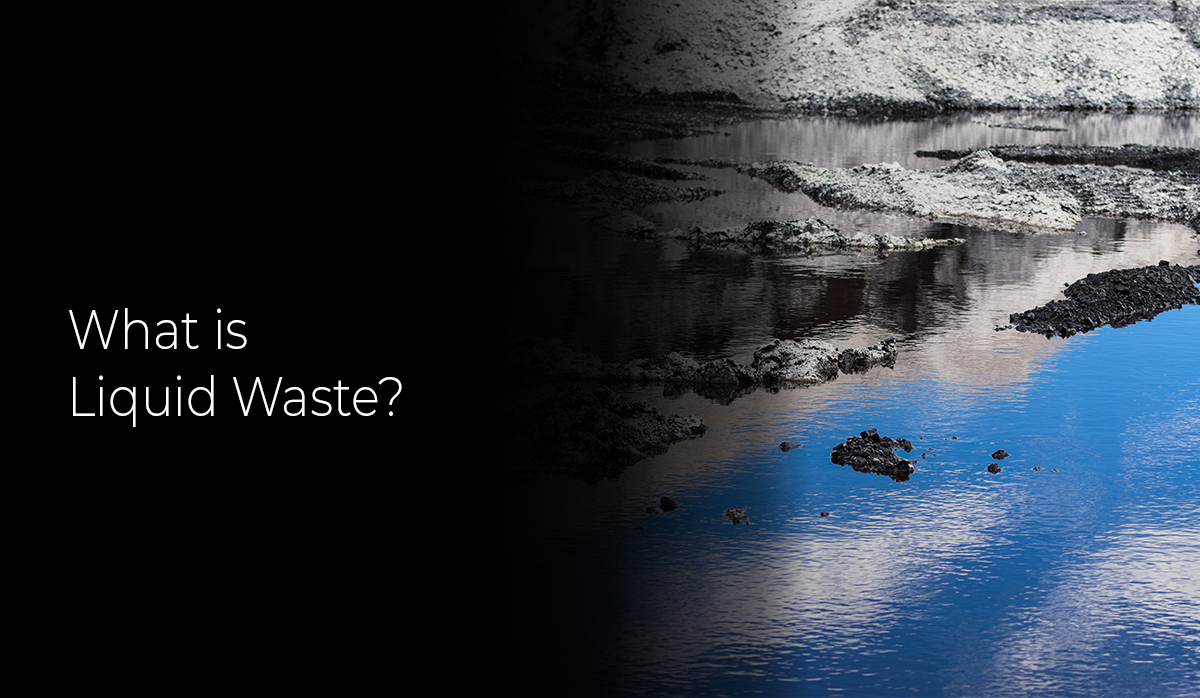Industrial Wastewater Treatment: Customized Solutions for Complex Wastewater Obstacles
Industrial Wastewater Treatment: Customized Solutions for Complex Wastewater Obstacles
Blog Article
Understanding the Comprehensive Process of Liquid Garbage Disposal: Best Practices and Environmental Impact Considerations
The monitoring of fluid garbage disposal is a complex concern that requires an extensive understanding of various best techniques and their associated environmental impacts. From the sorts of liquid waste created to the methods utilized for collection, treatment, and last disposal, each action plays a critical role in protecting environments and public health and wellness. As governing requirements evolve and modern technology breakthroughs, the conversation around these procedures ends up being significantly essential. What effects do these changes hold for future sustainability initiatives, and just how can stakeholders make sure that they are sufficiently addressed?
Kinds of Liquid Waste
Recognizing the various types of liquid waste is necessary for reliable management and disposal techniques. Liquid waste can be extensively classified right into numerous types, each requiring one-of-a-kind handling and treatment techniques.
Industrial fluid waste typically consists of harmful materials, including heavy steels, solvents, and chemicals, created during manufacturing procedures. These wastes demand stringent governing conformity to shield human health and the environment. Residential fluid waste primarily describes wastewater produced from homes, consisting of sewage and greywater, which, although less toxic, can still pose significant risks if poorly taken care of.
Agricultural liquid waste, consisting of overflow from farms, usually contains plant foods and pesticides that can cause ecological degradation otherwise treated appropriately. Medical liquid waste, generated from healthcare centers, consists of contaminated liquids such as physical fluids and chemicals, calling for specialized disposal techniques to protect against infection and ecological contamination.
Lastly, oil and grease waste, normally created by dining establishments and auto markets, can trigger serious blockages in sewage system systems if not handled correctly. Understanding these groups promotes targeted approaches for treatment, conformity with regulations, and effective disposal approaches, eventually advertising environmental sustainability and public wellness safety.

Collection Approaches
Reliable collection methods are critical for the correct monitoring of liquid waste, making sure that it is collected safely and efficiently prior to therapy or disposal. Different techniques are employed relying on the kind of liquid waste created, the volume, and the specific qualities of the waste.
One typical method is the usage of specialized collection storage tanks or sumps, which are made to catch liquid waste at the resource. These systems commonly include pumps that help with the transfer of waste to larger storage containers or therapy centers. Furthermore, mobile collection devices outfitted with vacuum technology are used in situations where waste is created periodically or in hard-to-reach locations.
For commercial setups, closed-loop systems can successfully reduce spills and leakages, permitting the recuperation and reuse of liquid waste. It is likewise vital to train employees on proper collection procedures to reduce threats connected with dangerous materials.
Additionally, applying routine upkeep schedules for collection tools makes sure optimal efficiency and safety and security. The combination of innovative tracking systems can improve collection performance by offering real-time data on waste levels and potential dangers. On the whole, reliable collection methods are foundational to lasting liquid waste monitoring practices.
Treatment Processes
Treatment processes play a crucial function in the administration of fluid waste, changing possibly unsafe products right into secure effluents or reusable resources - liquid waste disposal. These processes can be generally classified right into physical, chemical, and organic methods, each customized to attend to certain impurities present in the waste stream
Physical therapy approaches, such as sedimentation and purification, work by eliminating suspended solids and particulate matter. These methods are frequently the very first step in the treatment chain, successfully reducing the lots on succeeding procedures. Chemical therapies entail making use of reagents to reduce the effects of hazardous materials, precipitate heavy metals, or oxidize organic toxins, therefore enhancing the security of the effluent.
Organic therapy procedures, including triggered sludge systems this page and anaerobic digestion, take advantage of the all-natural capacities of microbes to degrade raw material. These techniques are particularly reliable for wastewater containing eco-friendly toxins. Advanced treatment innovations, such as membrane layer filtering and advanced oxidation procedures, are increasingly utilized to attain greater degrees of purification.
Incorporating a combination of these therapy methods not only makes sure conformity with governing standards but additionally promotes environmental sustainability by recuperating beneficial resources from fluid waste.
Disposal Options
How can organizations ensure the responsible and safe disposal of fluid waste? Efficient disposal choices are vital for safeguarding public health and the environment. The key approaches consist of land incineration, treatment, and disposal adhered to by discharge right into local wastewater systems.
Land disposal includes the mindful containment of fluid waste in marked land fills, guaranteeing that it does not seep into surrounding soil or water. Incineration, on the various other hand, subjects fluid waste to heats, converting it right into ash and gases, which require correct purification to minimize emissions. This method is suitable for hazardous wastes that can not be dealt with via typical methods.
In situations where liquid waste can be treated, companies might go with organic or chemical therapy processes to neutralize dangerous parts prior to discharging the dealt with effluent right into community systems. This route commonly straightens with governing demands, guaranteeing that the effluent fulfills safety and security criteria.
Ultimately, companies should carry out extensive assessments of each disposal alternative to establish its stability, considering aspects such as waste composition, governing conformity, and potential dangers to wellness and the atmosphere. By selecting appropriate disposal approaches, services can add to an accountable waste management strategy.
Ecological Impact
The ecological impact of liquid waste disposal is a crucial factor to consider for companies seeking to decrease their ecological footprint. Incorrect disposal methods can result in considerable contamination of water resources, soil deterioration, and negative effects on regional communities. For example, hazardous liquids can seep into groundwater, posturing risks to drinking water supplies and marine life. Additionally, the discharge of neglected or improperly dealt with waste right into surface area waters can cause eutrophication, leading to oxygen exhaustion and the succeeding death of fish and other organisms.

To reduce these influences, companies must adopt ideal practices such as executing extensive waste therapy procedures, promoting recycling and reuse, and adhering to regulatory standards. By taking a positive technique to fluid waste monitoring, entities can substantially reduce their environmental impact while sustaining sustainable growth goals. Ultimately, a thorough understanding of the environmental effects related to fluid waste disposal is essential for informed decision-making and liable stewardship of natural deposits.
Final Thought
Effective monitoring of liquid waste is important for guarding ecological integrity and public health. By adopting best methods in treatment, collection, and disposal, together with adherence to governing requirements, the possibility for harmful contamination of environments can be dramatically lowered. Constant improvements in modern technology and processes add to lasting waste management efforts. Inevitably, a comprehensive understanding of fluid waste disposal not only minimizes environmental effects yet additionally cultivates a commitment look these up to accountable resource administration and ecological stewardship.
The management of liquid waste disposal is a multifaceted concern that needs a comprehensive understanding of various best methods and their connected ecological impacts. From the kinds of liquid waste created to the techniques employed for collection, therapy, and final disposal, each step plays an essential function in protecting communities and public health.The ecological influence of fluid waste disposal is an important factor to consider for companies looking for to minimize their environmental footprint. Ultimately, a thorough understanding of the ecological influences linked with liquid waste disposal is essential for notified decision-making and liable stewardship of all-natural sources.
Eventually, a thorough understanding of fluid waste disposal not only alleviates environmental impacts however also fosters a commitment to liable source management and environmental stewardship.
Report this page